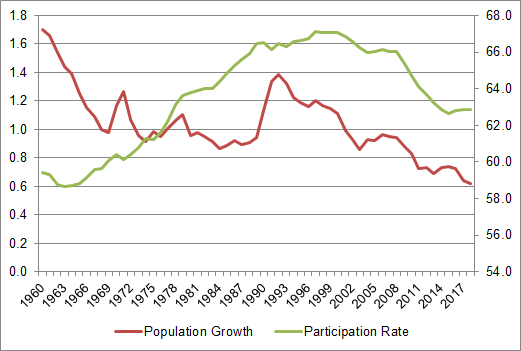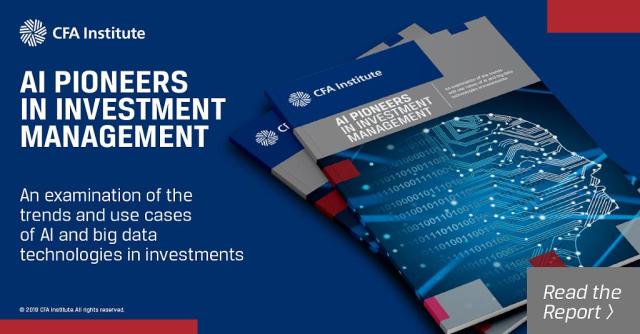[ad_1]
The US labor market has enjoyed strong growth over the last several years. Job creation has been robust, and the unemployment rate has fallen more or less continuously since 2009, reaching a 50-year low of 3.5% in September 2019.
But these figures don’t tell the whole story.
US Unemployment Rate (%)
The fact is the US labor market has a big problem in the form of a low labor force participation rate. This metric calculates the effective size of the labor force — specifically, the percentage of working-age people who have a job or recently looked for one. By definition, it excludes those unemployed who have given up on finding a job and effectively dropped out of the workforce.
And the percentage of these nonparticipants is much higher than it should be in an economy that has expanded for 10 years and is supposedly at or approaching full employment. In October 2019, the US labor participation rate was 63.3%. Eighteen years before, in October 2001, amid the recession that followed the bursting of the Tech Bubble, it stood at 66.7%.
The Long-Term Trend
Indeed, the US participation rate has been in secular decline since 2000. The rate of job growth is not keeping up with the pace of growth in the working-age population. So fewer people are finding or maintaining a place in the labor force — either because they lack the skills to enter it or are falling out of it.
This points to a significant opportunity deficit for US workers.
The US population growth rate has been steadily declining since 1992, so the working-age population is not growing as fast. So the falling participation rate amid these trends indicates a sharp increase in the number of long-term unemployed. Presumably this cohort is composed of predominantly older workers who perhaps have lost jobs and are having a hard time finding new opportunities and reskilling for new technologies.
US Population Growth and the US Labor Participation Rate (%)

Amid these trends, the US economy has enjoyed a period of almost uninterrupted expansion. We can extrapolate then that automation and outsourcing are putting a crimp on the number of available jobs.
While outsourcing drove job losses in the 1990s to the early 2000s, automation is the bigger driver today. And as companies automate, low-skilled and older workers are the most likely to be replaced. And such demographics tend to face more difficulties reintegrating into the workforce.
And consider this: Even after the longest economic expansion on record, the US labor participation rate has yet to return to where it was before the Great Recession. Once companies cut costs through automation, there is no going back.
So, even amid all the innovation, opportunity, and wealth created during the recovery, the outlook for US workers in general is worse than it was in October 2008, in the early days of the global financial crisis, when the labor force participation rate stood at 66%.
Implications
Given the divergence between a shrinking labor participation rate and record low unemployment, the historically low US unemployment rate hardly reflects the true US employment picture.
And the opportunity deficit perpetuates itself. So much surplus labor impedes wage growth. Which is why, even amid “full employment,” workers’ wages have stagnated.
There are other implications: Less labor participation means a weaker consumer and consequently weak inflation.
Total US Nonfarm Payroll (YoY Percentage Change)

What’s Next
To be sure, the news isn’t all bad. The participation rate has stabilized post-2015, which suggests that job growth is keeping pace with the tide of new working-age entrants into the labor force. For now.
But the current economic uncertainty presents ample risk. Demographic headwinds, trade disputes, and a slowing economy could put further pressure on the labor force. Job growth has already started tailing off.
Thus, we can expect the US labor participation rate to resume its relatively uninterrupted downward trajectory of the last 20 years.
If you liked this post, don’t forget to subscribe to the Enterprising Investor.
All posts are the opinion of the author. As such, they should not be construed as investment advice, nor do the opinions expressed necessarily reflect the views of CFA Institute or the author’s employer.
Image credit: ©Getty Images/Image Source
Continuing Education for CFA Institute Members
Select articles are eligible for continuing education (CE) credit. Record credits easily using the CFA Institute Members App, available on iOS and Android.
[ad_2]
Image and article originally from blogs.cfainstitute.org. Read the original article here.



